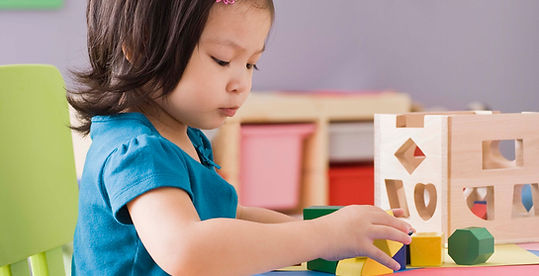What makes a montessori school different?
10 Reasons:
1 Focuses on key developmental stages
A Montessori curriculum recognises key developmental milestones happen between 2 and 5 years old. Younger children are able to develop using large muscular movements and language skills, by using the Montessori resources, especially those in the Sensorial area. Older ones are able to work on their fine motor skills by completing everyday activities such as pouring, cooking and using tools.
2 Encourages Co-operative Play
The classroom or ‘Children’s House’, is seen as belonging to the children. The children follow their learning path, with the teachers expert guidance. Children in Montessori classrooms, by the very nature of the environment, learn to respect one another and build a sense of community.
3 Learning is Child-Centred
Montessori students enjoy a classroom and curriculum designed around their specific needs, allowing them to explore and learn at their own pace and on their own terms. Everything in the classroom is within reach of the child, and furniture is sized for children to sit comfortably. In addition, older children in the class work with the younger ones, so mentoring comes as much from peers as it does from the adult teachers in the classroom.

4 Children Naturally Learn Self-Discipline
While the Montessori Method allows children to choose the activities they want to work on each day, and how long for, there are specific “ground rules” for the class that are consistently enforced by the teachers and children. This environment naturally teaches children self-discipline, and it refines important skills like concentration, self-control and motivation.
5 Ordered Classroom Environment
All objects and activities have their place in a
Montessori classroom. When children are finished with an activity, they place it back in its appropriate place. This sense of order helps facilitate the learning process, teaches self-discipline, and caters to a young child’s innate need for an orderly environment. When children work and play in an area that is neat and predictable, they can unleash their creativity and focus fully on the learning process.
6 Teachers Facilitate the Learning Experience
Teachers in the Montessori classroom are “guides” that are there to facilitate the learning experience, rather than determine what it will look like. Teachers take the lead from the children in the classroom, ensure the ground rules are followed, and encourage students to perform tasks at their own pace.

9 Individual to Each Child
7 Learning Inspires Creativity
Since children are allowed to choose their activities and work at them on their own terms, creativity in the classroom is encouraged. Children work at tasks for the joy of the work, rather than the end result, which allows them to focus more on process than product – a natural path to creativity.
8 Helps Develop Specific Skills
Research has found that five-year-olds in Montessori classrooms had higher maths and reading skills than their counterparts in public schools. In addition, social development appeared to be higher in Montessori students.
10 Focus on Hands On Learning
Students in Montessori education are allowed to explore activities and concepts at their own pace. This naturally encourages children to try more challenging areas, which accelerates their learning experience. Learning occurs at a comfortable pace for each student, rather than inflicting the same rate on every student in a classroom.
Contact Us...
One of the greatest benefits of the Montessori Method, particularly during the preschool years, is the focus on hands-on learning. The emphasis is on concrete, rather than abstract learning, as students work on activities that teach language, maths, culture and practical life lessons. Teachers encourage students to concentrate on tasks, and they discourage students from interrupting one another, allowing students to focus on activities until they are properly mastered.


